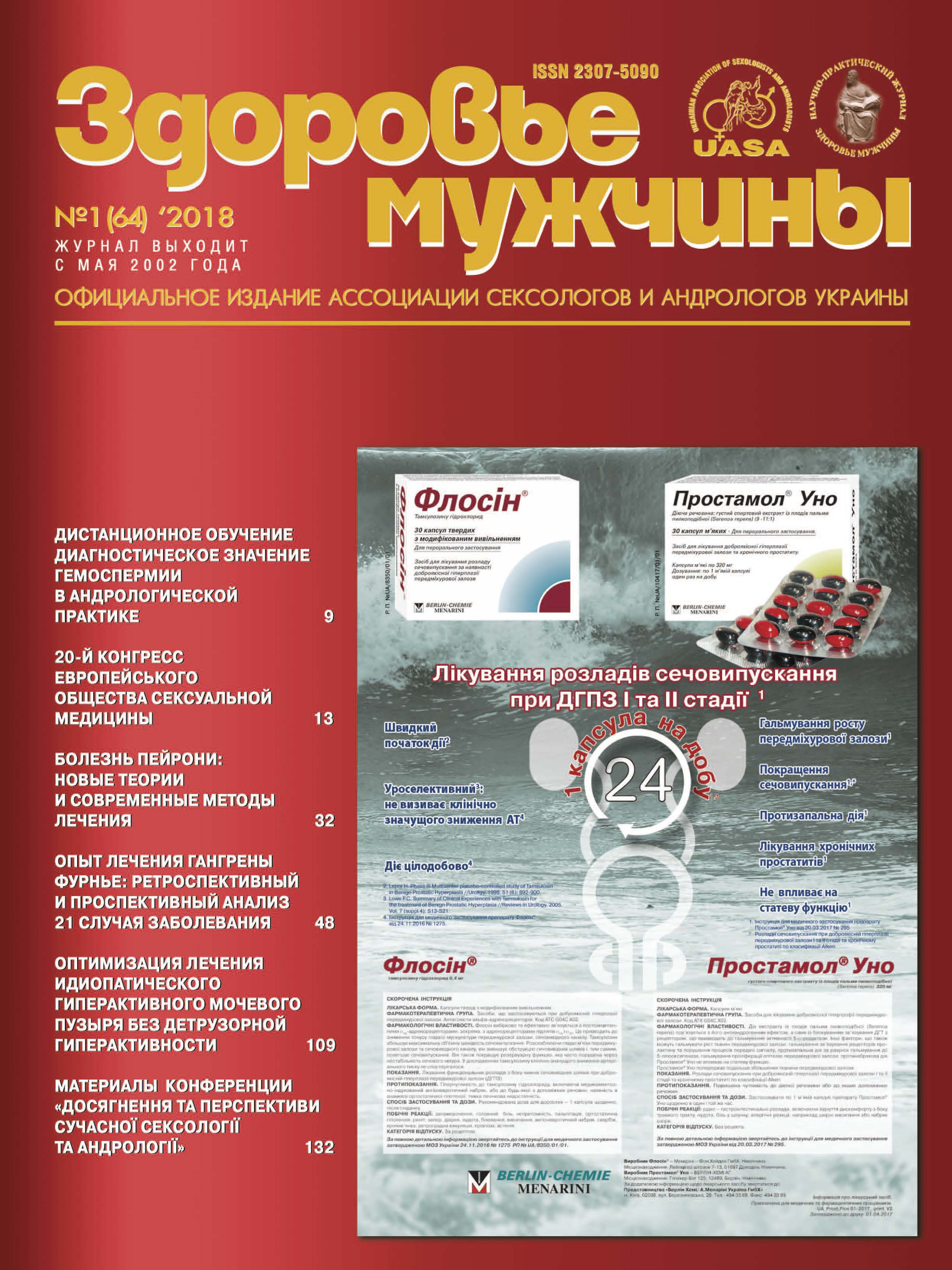Transrectal biopsy under ultrasound guidance using shear wave elastography in men with suspected prostate cancer
##plugins.themes.bootstrap3.article.main##
Abstract
Prostate cancer is the second malignant tumor by prevalence among men. Question of timely diagnosis of this disease is extremely important. Despite the large number of screening tests, the development of new visualization techniques and the use of invasive procedures such as biopsy, prostate cancer remain difficult for early diagnosis. The main disadvantage of a standard multifocal biopsy of the prostate is lack of specificity of ultrasound beam in B-mode. Particularly, the tumor node is isoechogenic in 30% cases.
The objective: проаналізувати застосування еластографії зсувної хвилі як додаткового методу отримання зображень ПЗ.
Materials and methods. The study included 31 patients. Patients were divided into 4 groups: the first group – control (conditionally healthy) (n=7), the second group – patients with benign prostatic hyperplasia (n=8). The third group – patients with chronic prostatitis (n=8). The fourth group – patients with prostate cancer (n=8). All patients performed a complex transrectal ultrasound (TRUSD), endocavital EC 6.5 MHz/10R sensor using shear wave elastography. Patients in the 2,3,4 group performed a transrectal, multifocal biopsy of the prostate gland. The biopsy was performed on a standard 12-point circuit. Additionally, a biopsy was performed from suspicious sites detected by the shear wave elastography.
Results. In all patients, the pathological findings are correlated with the data of the shear wave elastography.
Conclusion. The shear wave elastography should be an additional method of obtaining images of the prostate, complementary to traditional transrectal ultrasound and MRI.##plugins.themes.bootstrap3.article.details##

This work is licensed under a Creative Commons Attribution 4.0 International License.
Authors retain the copyright and grant the journal the first publication of original scientific articles under the Creative Commons Attribution 4.0 International License, which allows others to distribute work with acknowledgment of authorship and first publication in this journal.
References
Onur et al. Contemporary impact of transrectal ultrasound lesions for prostate cancer detection // J. Urol. – 2004. – 172 (2). – Р. 512–514. https://doi.org/10.1097/01.ju.0000131621.61732.6b
Heidenreich A., Bastian P.J., Bellmunt J. et al. EAU guidelines on prostate cancer. Part 1: screening, diagnosis and treatment of clinically localized disease // Urowb. – 2012.
Roethke M.C., Lichy M.P., Kniess M. et al. Accuracy of preoperative endorectal MRI in predicting extracapsular extension and influence on neurovascular bundle sparing in radical prostatectomy // World J. Urol. – 2013. – Vol. 31, iss. 5, pp. 1111-1116. https://doi.org/10.1007/s00345-012-0826-0
Krouskop T.A, Wheeler T.M., Kallel F., Garra B.S., and Hall T., Elastic moduli of breast and prostate tissues under compression // Ultrasonic Imaging. – 1998. – Vol. 20, no. 4, pp. 260–274. https://doi.org/10.1177/016173469802000403
Correas JM, Tissier AM, Khairoune A, et al. Prostate cancer: diagnostic performance of real-time shear-wave elastography. Radiology. 2015; 275(1): 280–289. https://doi.org/10.1148/radiol.14140567
Woo S., Kim S.Y., Cho J.Y. & Kim S.H. Shear wave elastography for detection of prostate cancer: a preliminary study. Korean journal of radiology 15, 346–355, (2014). https://doi.org/10.3348/kjr.2014.15.3.346
Ahmad S., Cao R., Varghese T., Bidaut L. & Nabi G. Transrectal quantitative shear wave elastography in the detection and characterisation of prostate cancer. Surgical endoscopy 27, 3280–3287, (2013). https://doi.org/10.1007/s00464-013-2906-7





